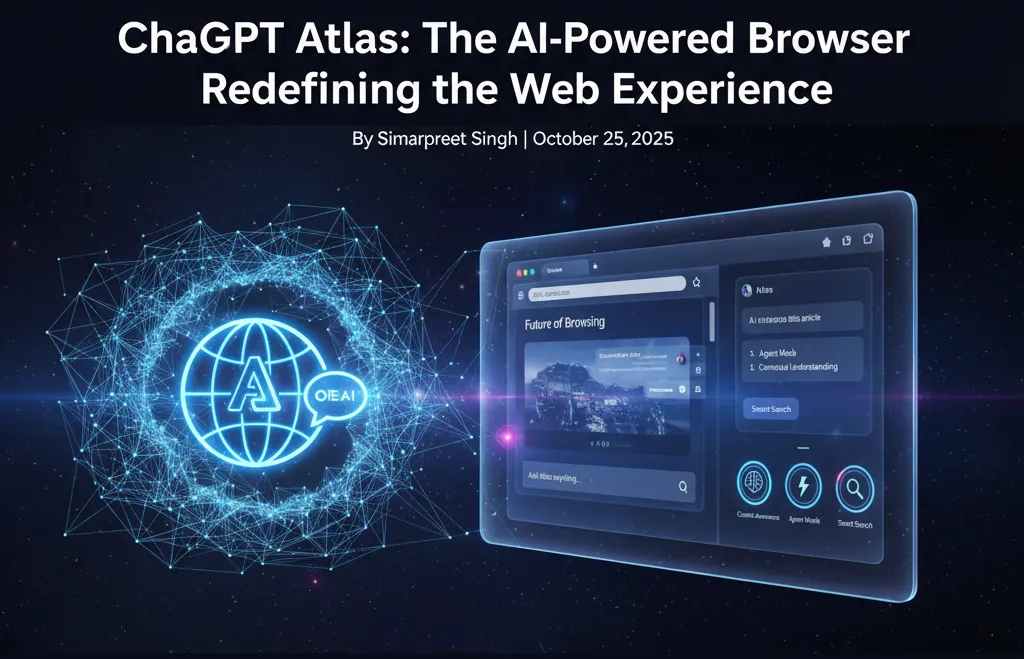
Vibe Coding: The Future of AI-Assisted Software Development
by Simarpreet Singh
Overview
Vibe coding is reshaping how developers build software. Instead of manually writing every line of code, developers describe what they want — the 'vibe' or intent — and AI models translate that vision into functional, optimized code. It’s the evolution of coding from syntax to semantics, from writing instructions to communicating ideas.
What is Vibe Coding?
Vibe coding is a process where artificial intelligence interprets human language and generates production-ready code. It combines natural language processing (NLP), machine learning, and software engineering principles to automate parts of the coding process. Developers simply describe what they want to build — a feature, a function, or an entire app — and the AI writes the implementation code accordingly.
How Vibe Coding Works
Vibe coding operates through a human-AI collaboration loop:
🧠 Prompt Understanding – The AI interprets the user’s natural language prompt (e.g., 'Create a login screen with email and password validation').
💻 Code Generation – Using large language models trained on programming data, the AI generates structured, functional code in the chosen language or framework.
🔁 Feedback Iteration – Developers review and refine the output using additional prompts or corrections.
🚀 Execution & Testing – The generated code is executed, tested, and optimized with further AI or manual improvements.
Benefits of Vibe Coding
⚡ Speed – Reduces development time dramatically by automating repetitive code tasks.
🧩 Accessibility – Lowers entry barriers for non-developers by translating ideas into code.
💡 Creativity Boost – Lets developers focus on architecture, logic, and design instead of syntax.
📈 Productivity – Allows small teams or solo founders to build complex products faster.
🔍 Error Reduction – AI suggests optimized and clean solutions, minimizing common coding mistakes.
🌍 Cross-Technology Integration – Enables code generation across multiple frameworks and languages effortlessly.
Key Technologies Behind Vibe Coding
🧠 Large Language Models (LLMs) – Foundation models like GPT, Gemini, or Claude trained on vast codebases.
🧩 Prompt Engineering – Crafting clear, structured inputs to guide AI outputs effectively.
🧱 Code Interpreters & Evaluators – Systems that run, test, and validate generated code automatically.
⚙️ Integrated Development Environments (IDEs) – Tools like VS Code, Cursor, and Replit with AI copilots.
📡 APIs & Automation Tools – AI integration pipelines for CI/CD, testing, and deployment.
How to Practice Vibe Coding
Getting started with vibe coding involves learning how to communicate ideas to AI effectively:
1️⃣ Define Intent Clearly – Start with precise goals (e.g., 'Generate a responsive React login page').
2️⃣ Use Contextual Prompts – Include details like frameworks, design preferences, or libraries.
3️⃣ Iterate with Feedback – Adjust the AI output through refinement prompts (e.g., 'Make it mobile-friendly').
4️⃣ Test Outputs – Always validate AI-generated code locally to ensure it meets functional and security standards.
5️⃣ Document Interactions – Keep track of successful prompts and outputs for reproducibility.
Steps for Getting Better at Vibe Coding
🪄 Master Prompt Crafting – Learn to guide the AI like a teammate, not a tool.
🎯 Think in Outcomes, Not Syntax – Focus on what you want to achieve, not how to code it.
🧩 Start Modular – Generate smaller components and assemble them into a complete system.
📊 Validate Regularly – Integrate AI testing tools or linting checks.
🧠 Learn from Feedback – Analyze where AI misunderstands you to improve prompt clarity.
🌐 Stay Updated – Explore new AI coding models and frameworks regularly.
Vibe Coding in Action: Example – Authentication API
Here’s an example of how a developer can use vibe coding to generate a simple authentication API:
Prompt: 'Generate a Node.js Express API for user registration and login with JWT authentication.'
AI Output (Simplified):
```js
import express from 'express';
import jwt from 'jsonwebtoken';
import bcrypt from 'bcryptjs';
const app = express();
app.use(express.json());
const users = [];
app.post('/register', (req, res) => {
const { email, password } = req.body;
const hashed = bcrypt.hashSync(password, 8);
users.push({ email, password: hashed });
res.send('User registered');
});
app.post('/login', (req, res) => {
const { email, password } = req.body;
const user = users.find(u => u.email === email);
if (!user || !bcrypt.compareSync(password, user.password)) {
return res.status(401).send('Invalid credentials');
}
const token = jwt.sign({ email }, 'secret');
res.json({ token });
});
app.listen(4000, () => console.log('Server running on port 4000'));
```Challenges in Vibe Coding
❗ Context Misunderstanding – AI may misinterpret vague prompts or missing details.
🧩 Code Quality Variability – Output quality depends on model training and prompt clarity.
🔐 Security Concerns – AI might generate code with potential vulnerabilities.
📘 Dependence on AI – Overreliance can weaken a developer’s understanding of core logic.
⚖️ Ethical & IP Risks – AI-generated code may raise licensing or originality concerns.
The Future of Vibe Coding
As AI models evolve, vibe coding could become the standard development workflow. Developers will focus more on designing systems conceptually, while AI handles syntax, structure, and optimization. It’s not about replacing developers — it’s about empowering them to build faster, smarter, and more creatively. Future IDEs may even allow real-time co-creation between human intuition and AI intelligence.
Conclusion
Vibe coding is the next step in the evolution of software engineering — merging human creativity with AI precision. By transforming ideas into executable software through natural language, it redefines what it means to code. Those who master vibe coding early will shape the future of development itself.
FAQs
Is vibe coding the same as prompt engineering?
Not exactly. Prompt engineering is part of vibe coding. Vibe coding focuses on the full workflow — from intent expression to functional software delivery.
Do I need to know programming to use vibe coding?
Basic understanding helps, but even non-developers can use vibe coding tools with structured prompts and review mechanisms.
Which tools support vibe coding?
Popular tools include GitHub Copilot, ChatGPT Code Interpreter, Replit Ghostwriter, and Cursor AI IDE.
Will AI replace developers?
No. AI enhances developer productivity, but human oversight, creativity, and architectural decision-making remain essential.
Is vibe coding safe for production apps?
Yes, with human review. Always validate, test, and secure AI-generated code before deployment.


